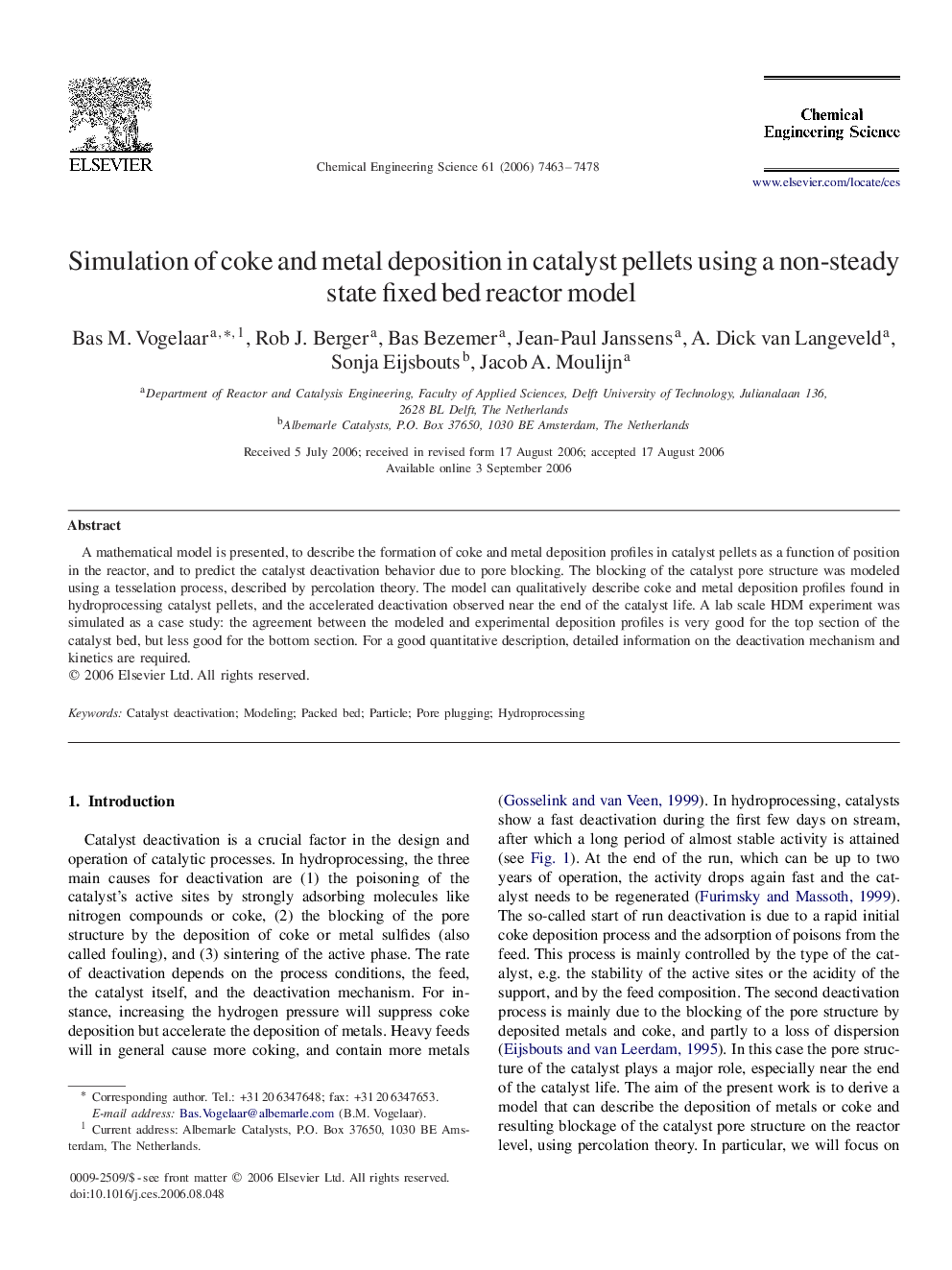| Article ID | Journal | Published Year | Pages | File Type |
|---|---|---|---|---|
| 159330 | Chemical Engineering Science | 2006 | 16 Pages |
A mathematical model is presented, to describe the formation of coke and metal deposition profiles in catalyst pellets as a function of position in the reactor, and to predict the catalyst deactivation behavior due to pore blocking. The blocking of the catalyst pore structure was modeled using a tesselation process, described by percolation theory. The model can qualitatively describe coke and metal deposition profiles found in hydroprocessing catalyst pellets, and the accelerated deactivation observed near the end of the catalyst life. A lab scale HDM experiment was simulated as a case study: the agreement between the modeled and experimental deposition profiles is very good for the top section of the catalyst bed, but less good for the bottom section. For a good quantitative description, detailed information on the deactivation mechanism and kinetics are required.
